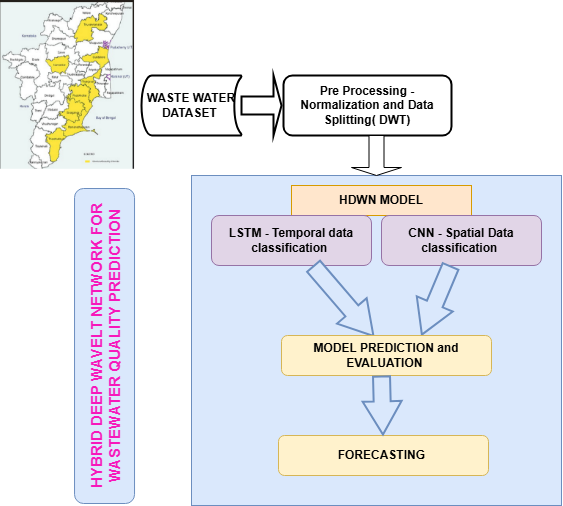
ABSTRACT
The process of predicting the water quality is done by various predictions algorithms using Neural network based on Artificial Intelligence and Machine Learning methods. Several water quality detecting indicators are used to measure the purity level of water with the amount of usage based on topography and area of utilization. Its objective is to lessen the water scarcity in the region by giving valuable guidance and solutions. In order to handle wastewater treatment and forecasting, a hybrid wastewater forecasting model has been presented. Among many other factors, this prediction procedure takes into account pH, COD, BOD, ammonia, pressure, and humidity. Long Short-Term Memory (LSTM), Convolutional Neural Networks (CNN), and Discrete Wavelet Transform (DWT) are all integrated in a Hybrid Deep Wavelet Network (HDWN). In HDWN model, CNNs retrieve spatial information, LSTMs model temporal dependencies, and DWT breaks down input signals. This integration makes it possible to make precise forecasts and insights, which makes it easier to monitor and optimize treatment systems effectively and lessen South Tamil Nadu's water scarcity. This model performance evaluated using metrics MSE is 0.068, RMSE is 0.2325, MAPE is 0.55 , MAE is 0.1945 and and R2 is 0.932. The comparative analysis of the tested results based on Integrated Neural Network LSTM model shows best predictions. Hence this HDWN model is useful for prediction and forecasting the wastewater quality.
Total file downloads: 8